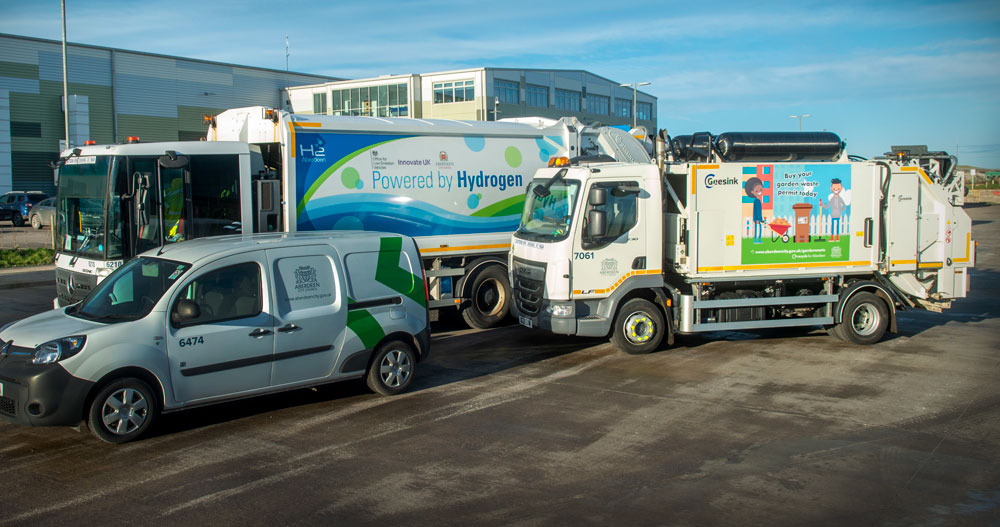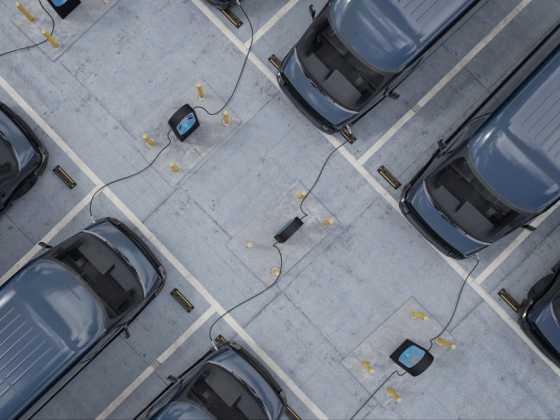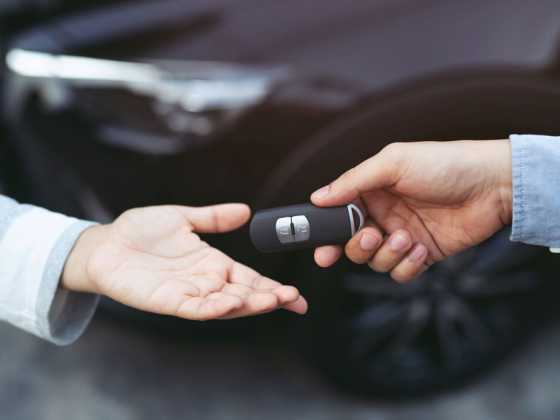The role for hydrogen in cleaner mobility

A number of routes now exist to using hydrogen, giving fleet operators a zero-carbon fuel while still having the full operational capability of diesel vehicles. Amanda Lyne, chair of the UK Hydrogen and Fuel Cell Association and managing director of ULEMCo, shares some recent innovations
While cars increasingly transition to EV technology, other sectors, such as haulage, construction and agriculture, are harder to electrify. Many fleet operators are looking for a more flexible match to their existing operational processes, and are not convinced that battery solutions alone will meet their needs.
While it may not be the ultimate solution, using hydrogen to replace conventional fuels enables commercial fleets to benefit from using a zero-carbon fuel right away, while still having the full operational capability of standard diesel vehicles. A number of routes now exist to using hydrogen, and these offer a more practical approach for many of these applications than pure electric vehicles.
Hydrogen offers faster refuelling and a higher on-board energy density than batteries, and this satisfies utility vehicles that require sustained high-power levels for their operation. With back to base operations like refuse collection, fire engines, water bowsers and so on, the lack of a current nationwide infrastructure (hydrogen fuelling or recharging points) becomes less of a problem.
With nearly half a million heavy duty trucks on the road in the UK alone, and all of them needing to be decarbonised by 2050, the need for fuel innovation is pressing. For the transport sector to develop in line with the government’s ambitious “net zero” climate targets, new thinking and approaches to decarbonising transport and off-highway vehicles are needed. On top of that, marine applications, airport vehicles and static plant such as construction equipment, generators and so on provide further opportunities for clean, practical solutions to power generation.
One company that has developed a number of different approaches to enabling hydrogen for clean mobility is ULEMCo, based in Liverpool. The firm already supports a fleet of around 100 vehicles across a range of hydrogen hubs in the UK. Importantly, these are practical, economic routes that fleet managers can take today, while we continue to develop long-term solutions.
Dual-fuel
Currently in deployment is an innovative dual-fuel approach, allowing hydrogen to be mixed with diesel directly in a conventional engine. Hydrogen fuel can then supply up to 70 per cent of the energy delivered, with a corresponding CO2 emission saving at the tailpipe. Since existing engine designs are used, this is a fast and cost-effective route to zero emission fleets. Critically for practicality, with a dual-fuel set up, the operator has the fallback of diesel even if hydrogen is not available, so the risk of deploying new technology and a new fuel is mitigated.
Current applications for this dual-fuel strategy include refuse trucks, sweepers, gritters, water bowsers and other specialist vehicles supplied to forward looking authorities such as those in Aberdeen, Glasgow, Oxfordshire and Yorkshire.
A further benefit can be obtained by deploying a hydrogen dual-fuel conversion in which HVO – for hydrotreated vegetable oil – is used in place of diesel. It can be sustainable if it is produced from a waste-derived feedstock that does not contribute to deforestation. Combining this with the zero-carbon fuel hydrogen opens up the exciting opportunity for negative carbon solutions.
Fuel cell
A second approach sees the integration of a fuel cell unit as a base electric range extender. These systems work with electric drive systems, and use a fuel cell to convert hydrogen to electricity. The maturity of the technologies is important here, and the relative economic case too.
ULEMCo with its partners has developed the world’s first purpose built zero emission emergency ambulance, incorporating a hydrogen fuel cell in the powertrain, which can be refuelled quickly and is capable of up to a 300-mile range.
Studies have shown that zero emission battery electric fire tenders – in combination with hydrogen fuel cells and a minimum of 8kg of onboard hydrogen fuel storage – will meet all current requirements for flexibility, emergency response and the water pumping requirements. This will be invaluable particularly in rural and semi-urban services, and for specialist HGVs with power take-offs, where batteries alone will not provide the overall energy needs of the application. The combination of stored energy in the batteries and hydrogen fuel which can be refuelled rapidly, are needed to ensure the ‘always ready’ rapid response requirements of the operation.
A second conclusion from recent work was that this onboard energy strategy incorporating hydrogen fuel could be met within the existing vehicle design, with no compromise to the equipment installation, and therefore would speed up the potential deployment of zero emission vehicles in these types of applications.
Internal combustion
An even more radical approach under development at ULEMCo allows conventional vehicle engines to be run on 100 per cent hydrogen fuel, which with a bespoke design and whole vehicle system approach can be optimised as diesel-equivalent, thermally efficient engines that have immeasurable NOx emissions. Currently close to completion is a project to convert an aircraft tow tug vehicle to an electric hybrid powertrain running with a 100 per cent hydrogen zero emission combustion engine. This builds on the success of a trial of 100 per cent hydrogen static genset engines. It should be noted that versions of ultra-low emission vehicles with hydrogen combustion engines are not yet commercially available, and they will not have some of the other benefits that have been seen with fuel cell electric vehicles – such as a quieter and smoother driving experience, which may be valuable to operators.
Hydrogen as a ‘synthetic fuel’
While hydrogen can be produced synthetically by hydrolysis, it doesn’t generally get that epithet. Today’s discussions of synthetic fuels tend to focus on biodiesel, methanol, HVO and many other more exotic materials. Indeed, hydrogen is often used to produce synthetic fuels and can even reduce CO2 by combining with it to produce methanol.
Synfuels face number of hurdles to achieve acceptance. Vehicle OEMs will want to test thoroughly before approving them for use in their engines, and will look for a drop-in replacement for current fossil fuels. Production volumes are very small at present, meaning costs are relatively high. Company boards may be reluctant to commit to the large capital requirement of a new production line if they perceive electric vehicles to be the immediate future.
While synthetic fuels can be produced from renewable energy sources, the process still generates carbon emissions, which can limit their potential as a low-carbon alternative to fossil fuels.
Happily, should synthetic fuels gain currency, then hydrogen may potentially be used alongside. In one recent initiative, announced by ULEMCo last year with Keenan Recycling, a waste collection truck was converted to dual-fuel, combining hydrogen with HVO, giving the opportunity to address both direct tailpipe CO2 emission reduction from the hydrogen (typically 30 per cent), along with the use of a sustainable fuel that can avoid up to 90 per cent of net CO2 emissions. This was the first dual-fuel refuse truck of its kind in the UK, and makes use of the hydrogen refuelling hub in Aberdeen.
The adoption of any new approach to achieving net zero in transport, agriculture and construction applications will require significant investment in infrastructure, technology, and public awareness to overcome the challenges and achieve widespread adoption. However, HGVs, utility and heavy-duty vehicles now have several viable routes to zero emissions with normal operations, and hydrogen is squarely part of the solution in these applications. We are encouraged to see the current working fleet grow across a range of hydrogen hubs in the UK.






